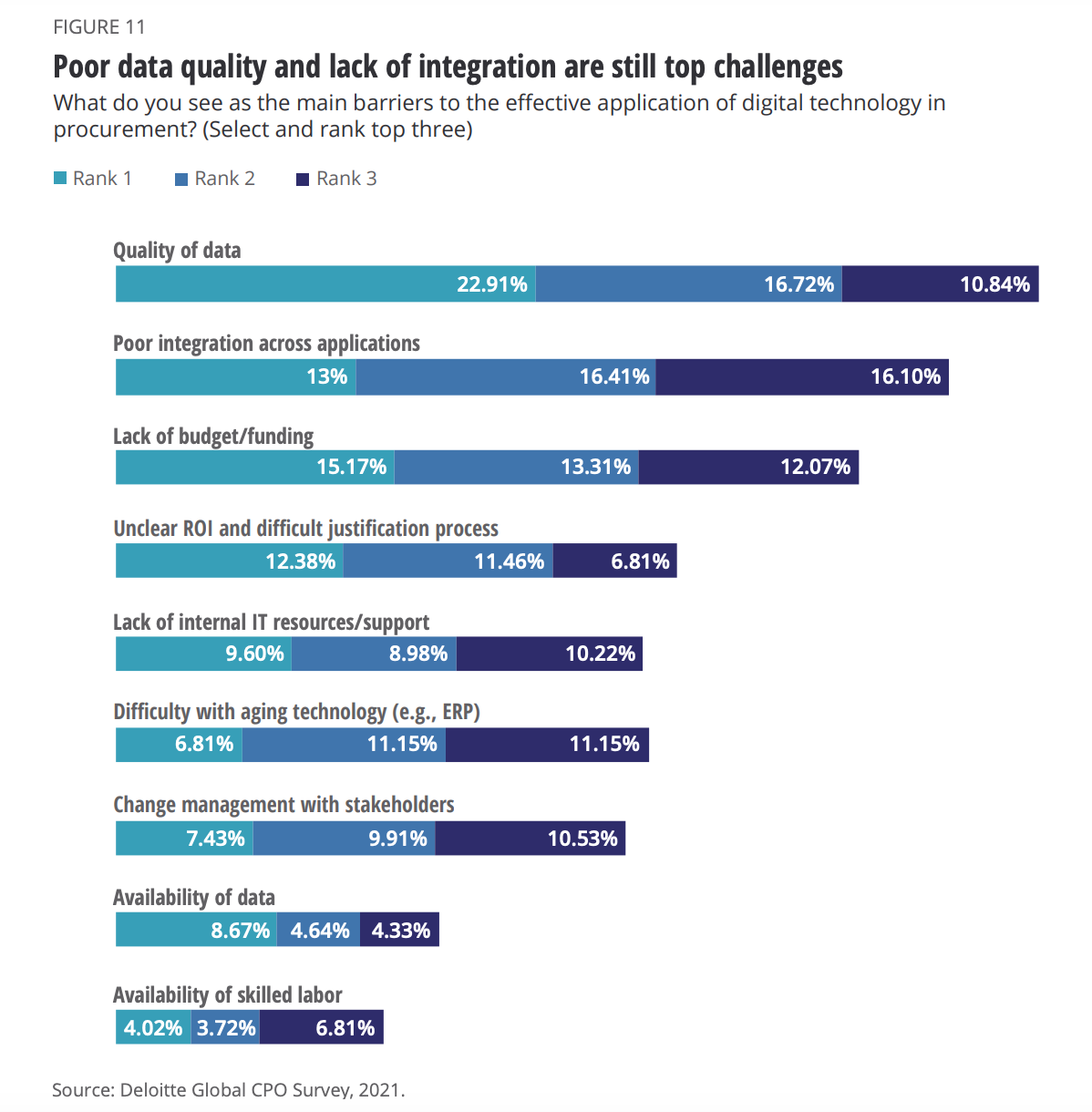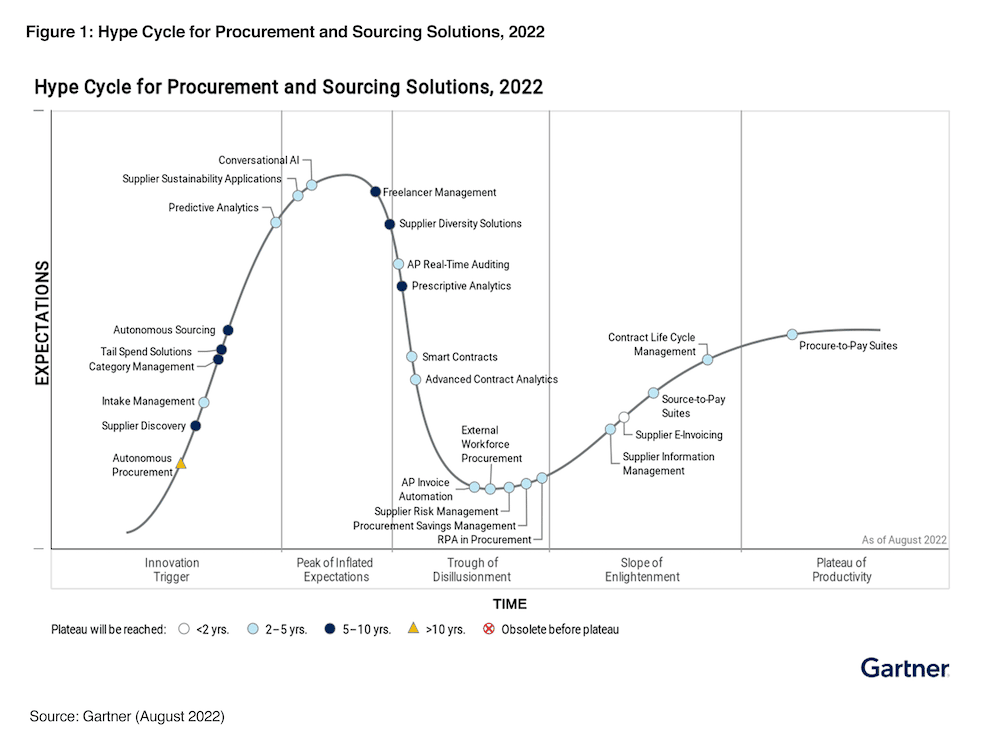How to get more value from finance and procurement systems
Enterprise software implementations are notorious for blowing deadlines and draining budgets. How do we break the ROI ceiling that hobbles even the best-planned deployments?

Technology is supposed to augment the capabilities of a business, yet anyone who has implemented enterprise software knows new systems always come with unforeseen issues.
In the finance and procurement worlds, implementations of systems like procure-to-pay, source-to-pay, or contract lifecycle management all offer well-documented benefits around increased spend control, reduced risk, and improved operational efficiency. Yet for many organizations, these benefits have ceilings. Such systems can deliver step-change improvements for the first couple of years, but over time the breadth of spend they capture levels off.
It doesn’t have to be this way, and based on conversations I'm having with finance and procurement leaders in the midst of tech evaluations, people know this. Especially in today’s shape-shifting economic environment, many businesses are asking what they can do to add value to their current systems rather than look to what new system they should pursue next.
Interestingly, the answer to this problem has nothing to do with sparkly upgrades like conversational AI or autonomous procurement or predictive analytics. It’s actually much simpler. The most exciting technologies in the finance and procurement markets today are what I term “boring” innovations. The common theme is of opening up the value of digitized processes to make them more adoptable and collaborative for anyone who touches spend in the business.
Done right, the result will be a shattering of the ceilings that systems like P2P, S2P, and CLM often encounter.
Understanding the Ceiling
The adoption of standardized finance and procurement systems is well documented. Generally, systems for P2P/S2P have achieved 50% market penetration (closer to 70%–80% in the enterprise segment, lower in the mid-market segment), whereas CLM has attained likely 30%–40% adoption due to a rapid acceleration during the pandemic.
What’s less thoroughly documented is the gap in ROI between what organizations were pitched and what was delivered. Part of the issue is opportunity: the systems often start with low-hanging fruit like poorly consolidated categories and use quick-win savings to fuel momentum. But even an orchard of slouching savings trees can’t provide the long-term adoption protein a business needs to generate savings year after year.
The reasons behind the problem — what I call the ceiling — are deeply rooted, and thus require much more than simple process tiling to extract the value deeper down. To get the full value of a P2P/S2P or CLM deployment, you need to dig down in the soil and gets rocks out, because you need to lay better data and process design foundations to maximize the value from the new systems.
Take a look at the 2021 Deloitte CPO survey to see what I mean. When asked what the main barriers to the effective application of digital technology in procurement are, CPOs align on a few recurring themes:

- Data. The classic “garbage in, garbage out” problem won’t go away until the roots of the problem are addressed. For example, suppliers are tired of being asked to continuously update a dozen different portals. They don’t have the personnel or patience to keep it all accurate, which produces dirty supplier records. Transaction data suffers from similar limitations: POs are fine when first cut but need changes when there are delays and changes to plans. Employees then manually enter the data, sometimes fat-finger a field, and break something in the process.
- Experience. Businesses have rapidly digitized in recent years, but they’ve done so in departmental silos. And inside those silos there might even be redundant applications that muddie workflows. Which of course means that if you don’t work inside that siloed function, you might not even know which application to use for what process. The result is a fragmented employee experience across the business. The Deloitte data highlights this through not only the integration challenge but also the IT resource constraints — that is, the people who are supposed to unify and make all of these things work in harmony.
- ROI. This is where we hit the ceiling. There’s a promised ROI and means to get to it, but many of these systems don’t hit that goal. They’ll come close, but the reality is that, for a P2P system, most businesses learn to accept PO-backed spend rates of 50%–60% even after five or more years of using a system. As the above two points make clear, there are fundamental blockers for many companies to go beyond such ceilings. The scope of addressable spend is limited when the data that run these systems prevent processes from flowing smoothly, and if the employees who need to run requests through these systems can’t make sense of the technology landscape, they’ll do what any stressed corporate citizen would do: ram the request through email or Slack/Teams so they can go back to the other fires they’re trying to put out.
Put it together and we see that the ceiling is a collaboration problem. The most advanced form of a procurement or contracting process — the one that captures the greatest amount spend or contracts — requires truly cross-functional collaboration. Yet P2P/S2P and CLM have all been designed from the perspective of their primary users: finance or procurement staff, or legal in the case of contracting. When each department commonly sits in its own process and technology silo, with its own goals and priorities, this ultimately dilutes the ROI of the systems they’ve adopted, because they can’t get other departments to collaborate with them.
To put it plainly: Without adoption, nothing else happens.
How to Break the ROI Ceiling
If the ceiling is created by foundational limits that prevent cross-functional adoption and collaboration, then the way to break through that ceiling is to find ways to bridge siloed processes and systems.
One way I’ve enjoyed explaining this perspective recently is pointing out a seemingly odd set of choices in the Gartner Hype Cycle for Sourcing and Procurement Solutions. In the August 2022 version of the report, Gartner analysts put P2P, S2P, and CLM systems in the category of (or approaching) the “plateau of productivity.” This makes sense, given the above discussion and the fact that many of the most commonly used vendors were first incorporated in the 1990s or early 2000s.

Yet when it comes to the stuff to the left — what Gartner calls “innovation triggers” — one would expect the finance and procurement equivalent of flying cars. We do see that in a handful technologies getting more interest: conversational AI, autonomous procurement, predictive analytics. Yet the newest, most innovative technologies that Gartner chose to highlight are decidedly not futuristic-sounding. Instead, they are around relatively “boring” innovations: tail spend management, supplier discovery, and yes, intake management.
Crucially, all three of these technologies address fundamental problems at the root of the ROI ceiling. They aim to do so by complementing or “bolting on” to the established ecosystem, providing better or more accessible data and more friendly, automated processes for all stakeholders.
- With supplier discovery, the aim is to complement current supplier identification and qualification efforts with a tool that looks outside the established supplier networks of major vendors. In order to respond to the pandemic-driven need to redesign or create more resilient supply bases, businesses are trying to find ways to bring the supplier discovery process into a separate channel, making it more automated and accessible.
- Tail spend solutions are about both finding savings in traditionally ignored areas and enabling self-service for stakeholders. The idea here is that incumbent systems are primarily designed for large category outlays and recurring spend — that is, spend that is contracted and standardized for e-procurement. In this context, adding on a marketplace or dedicated RFX tool as a bolt-on to P2P or S2P makes perfect sense: allow end users to get the things they need in a streamlined environment, while pushing above the ceiling to extend full finance-procurement spend coverage.
- Intake management follows the same themes but accomplishes the larger goal of helping businesses orchestrate multiple systems. Think of it as creating a single front door for any type of request, as well as for the cross-functional approvals required to get a purchase across the goal line. With the data and system proliferation issues mentioned above, intake is getting called out by Gartner here because it unifies an experience created by unchecked system proliferation, or from a proliferation of forms and fragmented workflows born of complex S2P system design. And critically, intake done well is designed to be inherently cross-functional, enabling collaboration between finance/procurement, legal, security, IT, and any other stakeholder to create both visibility and adoption of a purchasing or contracting process.
Believe the Hype
Exercises like the Hype Cycle are, of course, a manifestation of (well-informed) opinion. So the question that needs to be answered is, should you believe the hype of these “boring” innovations?
I think so. These types of technologies acknowledge the reality of the current ecosystem. The truth is that businesses, now facing down a recession and employee burnout from years of disruption, are not interested in a rip and replace exercise unless their transformation projects have been an abject failure. So instead, they are turning to the places where changes will generate the most leverage. That means complementary solutions that help them:
- Capture more spend — especially the hard types of spend that are often ignored or distributed among budget holders, like services spend or infrequent tail spend
- Do more with less, augmenting the capacity of current resources and filling knowledge gaps of those who have decided to move on
- Enable a collaborative, cross-functional environment where employees willingly embrace finance and procurement involvement because it reduces enterprise risk while enabling growth
These are not utopian, vague promises; they are about getting down to the root causes of the ROI ceiling so you can get more value out of P2P, S2P, CLM, or whatever systems you’re using to make the business work more effectively — for everyone, not just your function.
Maybe what we needed all along wasn’t flying cars, but instead improvement of the basics to go a little bit higher than we’ve gone before.
Enjoy this newsletter?
Sign up yourself if this was forwarded from a friend or colleague.
Need help with something? Hit reply to send us research questions or to say hello. We love to trade notes!
Interested in hearing more from Zip? Visit our website or sign up for company updates.
Note: By clicking subscribe you confirm that you have read and understood the Zip Privacy Notice that explains how we collect and use your personal information, and includes directions on opting out from our newsletter. If you have any questions, please reach out to privacy@ziphq.com.